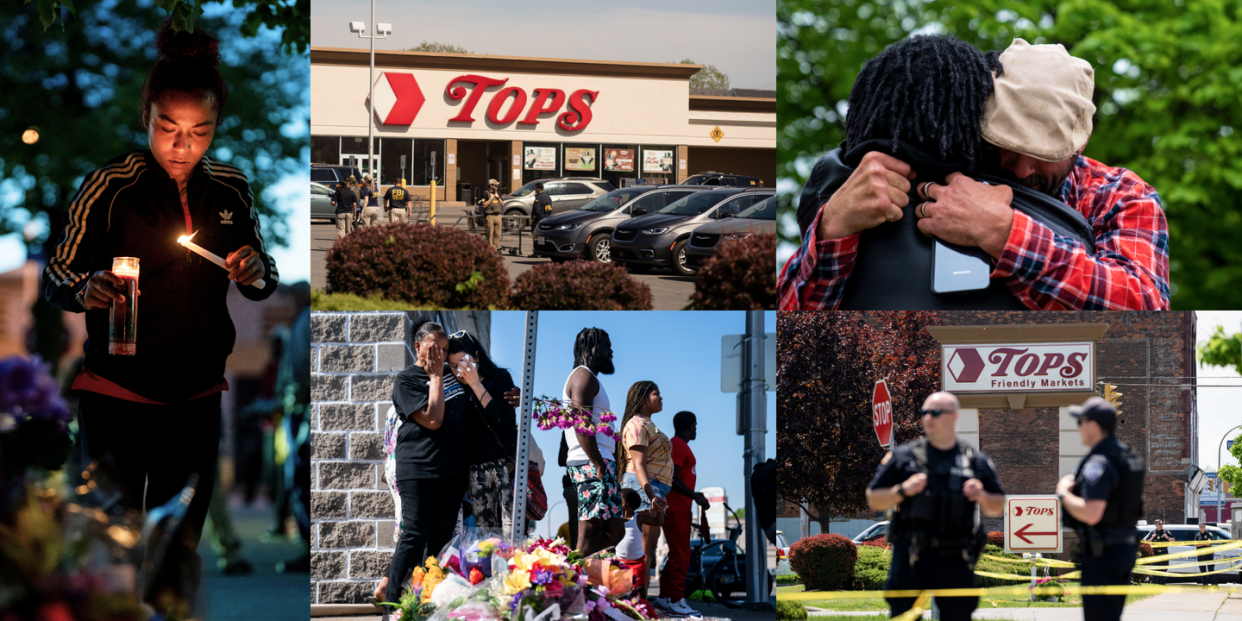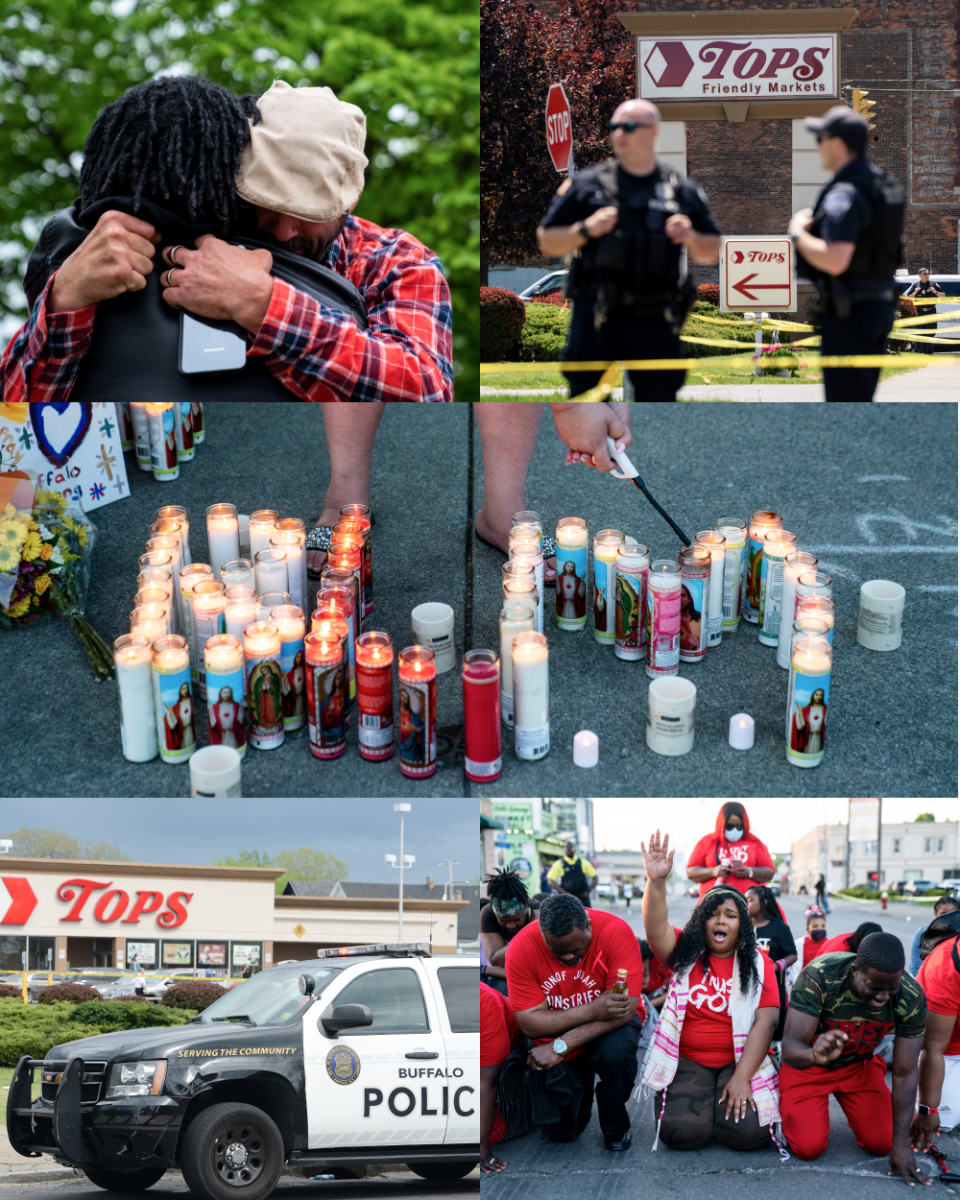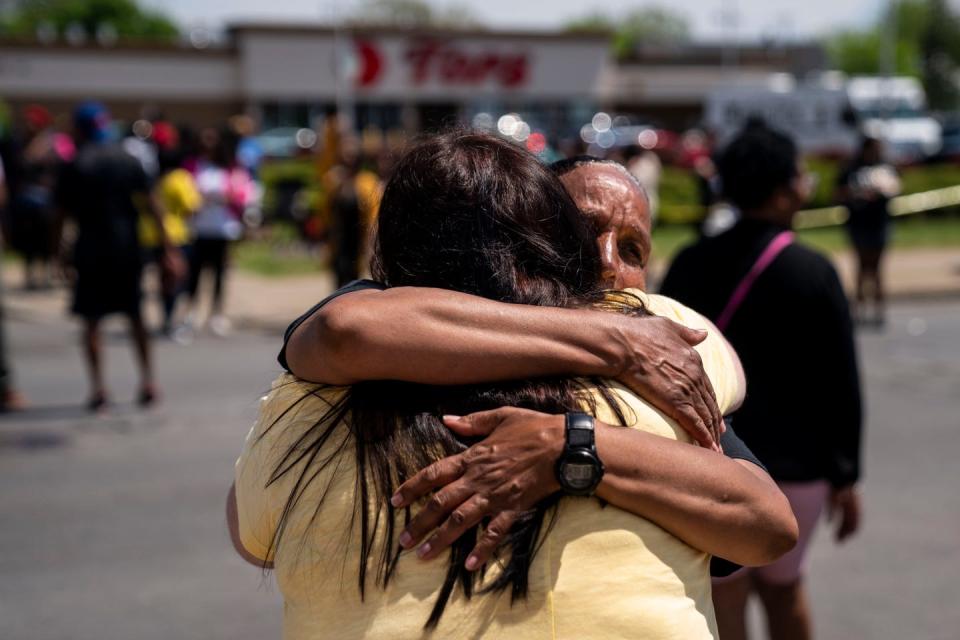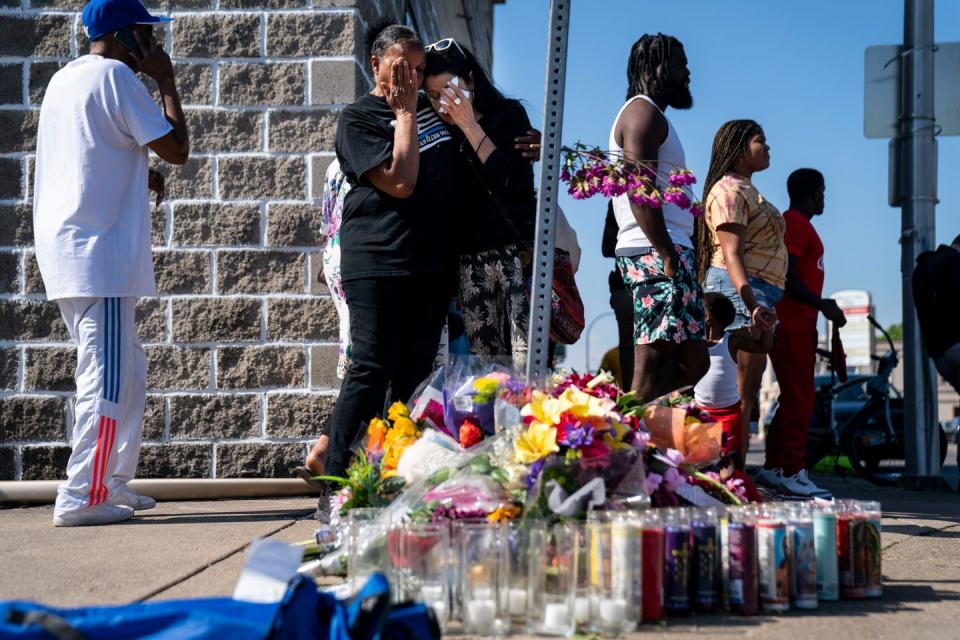“What Happened in Buffalo Is Not a One-Off Tragedy”


Buffalo, New York is the sixth most segregated city in the country.
This past Saturday a white supremacist drove four hours to kill Black people in Buffalo. The location of this massacre was Tops on Jefferson, the lone grocery store in what is otherwise the food desert of East Buffalo. It is a Black-owned grocery store in the Blackest part of Buffalo—a grocery store this community fought and organized to get for decades. Residents of East Buffalo called for a full-grocery store for more than a decade before Tops opened, going as far as to contact executives from the grocery store chain to ask them to open a store in their area.
Tops is more than a grocery store to the residents of the East Side of Buffalo. It is a community-rooted space. It is a place where Black Buffalo found their needs being met. You can get to Tops by bus. You can pay your utility bills there. You can cash checks there. You can get a money order. In this place the community felt safe, nurtured, connected, and loved.
Saturday is the day after SNAP benefits were distributed and when folks (mostly Black women) were doing their shopping for the week. It is when Black elders were chatting next to the bakery section and little children were running around asking if they could get a candy bar. This is when a white man walked into the store intent on killing Black people.
These Black victims—and I want to be clear that the victim designation should be appropriately applied to this entire community—were targeted in a place that is centered around community. A place they fought for to be able to meet their needs. This was a truly evil act.

Buffalo native Dr. Takiyah Nur Amin, who is a scholar and educator, echoed the importance of community to the Black residents of Buffalo when I spoke to her. “What a lot of people don’t understand is that Black Buffalo residents have a lot of pride and dignity. We value our community deeply and are close-knit, even though the city has been under-resourced and taken advantage of in some ways for years.”
As I watched commentary from politicians, on social media, on television, and in my personal group chats, I was struck by the short-sightedness of so many people.
This tragedy is not a one-off act, it is the latest in a long line of violence and harm to the Black people of Buffalo—and this murderer knew it. His rampage was planned and carried out specifically to not only harm the 10 souls who were killed, but also the overall stability, vitality, and mental health of Black Buffalo and all Black people.
Again, Buffalo is the sixth most segregated city in the country.
Let that sink in. The Black community of Buffalo has been segregated since the first large groups of Black folks arrived during The Great Migration, looking to escape the danger of the South and in search of jobs. Through racist zoning laws, “restrictive covenants” that allowed homeowners to stipulate homes could only be sold to other white people and redlining, white lawmakers were able to create a hyper-segregated Buffalo that still exists today.
Through this redlining, the city of Buffalo was able to restrict the ways that money could flow into and out of the Black neighborhoods on the east side of Buffalo. The Federal Housing Authority’s “prevailing composition” rule required public housing projects to be filled with people of the same race. That, coupled with an unwillingness of white communities to accept public housing in their neighborhoods, meant that all the public housing complexes built in Buffalo are on the Black side of town.
For more historical context, you should know that in 1957 the city of Buffalo created the Ellicott District Redevelopment Project. This project displaced 2,000 families—80 percent of whom were Black—and left them with little in return. Not long after, a highway was built through the heart of East Buffalo, further segregating the city.
Buffalo is in Erie County. White people make up 76 percent of the Erie County population, but only represent 45 percent of the population of Buffalo. Conversely, Black people make up 13% of the Erie County population but 37 percent of Buffalo. Of all people who identify as Black within the City of Buffalo, roughly 85 percent live east of Main Street.
The life expectancy of white people on the west side of Main Street in Buffalo is five years higher than their Black neighbors on the east side. Again, let that sink in. Moving just a few miles in Buffalo changes your life expectancy. This is the very definition of structural, deliberate racism.
This racism extends to employment opportunities. Job access is severely hampered by a lack of investment in public transportation—something that only 5 percent of white residents use versus 21 percent of Black residents. Meanwhile, 58 percent of jobs in the area are not accessible by public transportation.

Buffalo and all Black people in the United States mourn the losses of and pray for the loved ones of Aaron Salter, Katherine Massey, Celestine Chaney, Roberta Drury, Pearly Young, Ruth Whitfield, Heyward Patterson, Margus D. Morrison, Andre Mackneil and Geraldine Talley. Nine out of the ten victims were over 55 years old—elders of this community who carried with them a living history of Black Buffalo, now gone.
It’s worth repeating over and over again: Buffalo is the sixth most segregated city in the country. It is time to address white supremacist violence—the kind that takes 10 lives in one afternoon, and the kind, enacted through racist policies, that has diminished the lives and opportunities of generations of Black people. For those looking for a sign to get in this fight, here it is, the work is there to be picked up. Black communities know what we need, the question is are you ready to listen and follow our lead to take meaningful action?
You Might Also Like

